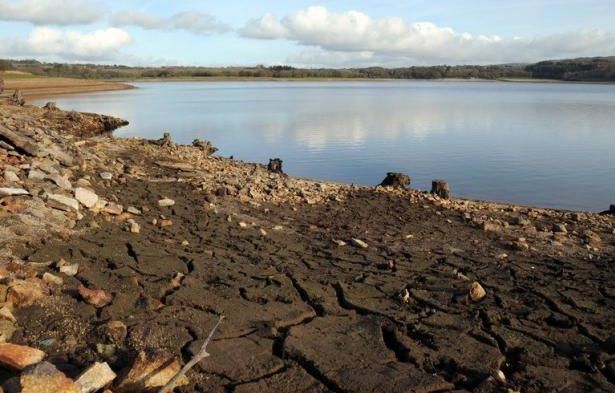That was all it took… The unusual autumn heat and heavy rain are putting a strain on French water tables, which have already been suffering for several months. Their recharge period, which traditionally begins in September, is delayed and still remains “very uncertain” for October, already raising concerns for 2024.
As of October 1, 66% of metropolitan aquifers were still below normal, a situation slightly more degraded than at the end of August (62% below normal), announced Thursday the Bureau of Geological and Mining Research (BRGM)responsible for monitoring the main metropolitan drinking water reserves.
18% of observation points remain at very low levels
“The storms of mid-September were not very effective in recharging the water tables” and consequently “the situation deteriorated between August and September”, indicates the public body, noting that 18% of its observation points remain at very low levels.
However, “the situation is generally more favorable than that observed last year, in September 2022, when 74% of levels were measured below normal,” underlines the BRGM in its monthly bulletin.
However, the situation is more mixed. The rains that fell in places in spring and this summer helped to partially recharge certain water tables. This is the case on certain parts of the coast, from Seine-Maritime to Pas-de-Calais or the Atlantic coast.
September rains which did not always have visible impacts
In Charente, in the Massif Central and the south-east, the rains that occurred in mid-September, however, did not have a visible impact on the water tables, due to low infiltration and still very active vegetation which absorbed the majority of the flowing water.
But most of the territory remains faced with worrying levels of water tables, particularly around the Mediterranean rim, in the Rhône-Saône corridor and in the south of Alsace.
According to the Propluvia website, around two thirds of metropolitan departments remain at least partly at the red crisis level for drought, leading to significant restrictions on access to water.
The recharge period is off to a bad start
The situation is all the more worrying as autumn is a “pivotal period”. September usually marks the start of the resumption of recharge, with the occurrence of the first significant precipitation and the drop in temperatures.
But this year, “the share of rain infiltrated at depth remains low due to insufficient precipitation and localized and intense stormy episodes favoring runoff. In addition, the vegetation is still active, due to high temperatures, and consumes part of the infiltrated water,” underlines the BRGM.
According to Météo-France, this first month of meteorological autumn was the hottest September ever measured in France, continuing a series of almost two years above seasonal norms. In mainland France, September 2023 ended “between 3.5 and 3.6°C” above the 1991-2020 reference period, “with an average temperature of around 21.5°C”, announced the national forecaster on September 29.
And in October, this unusual and “exceptional” heat continued, with the 30 degree mark regularly crossed over the first 10 days of the month. Not to mention that “since the beginning of the month, it has barely rained” after a rainfall deficit of 20% on average in September, favoring a “drying tendency” of the soil, Météo-France added on Thursday.
What to fear in 2024?
“Mild temperatures risk postponing the dormancy of vegetation” and consequently the recharge of water tables, estimates the BRGM. “The start of the recharge period therefore remains very uncertain for the month of October,” concludes the organization.
However, next year’s situation will depend on these autumn and winter recharge levels. “On the aquifers displaying very low levels at low water”, a period where the levels are lowest before the start of recharge, such as those of the Sundgau in Alsace and the Rhône-Saône corridor, “it seems very little likely to compensate for the deficits accumulated over several years and return to levels above normal in 2024,” warns the BRGM.

